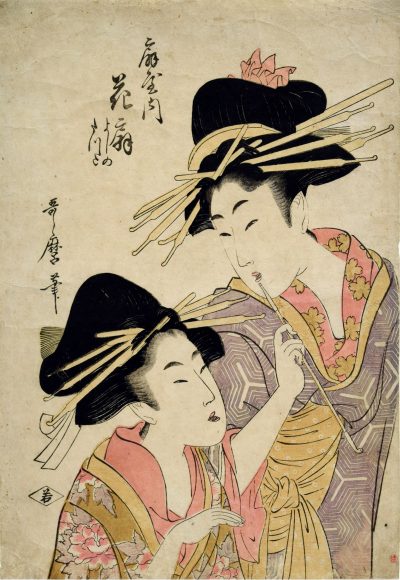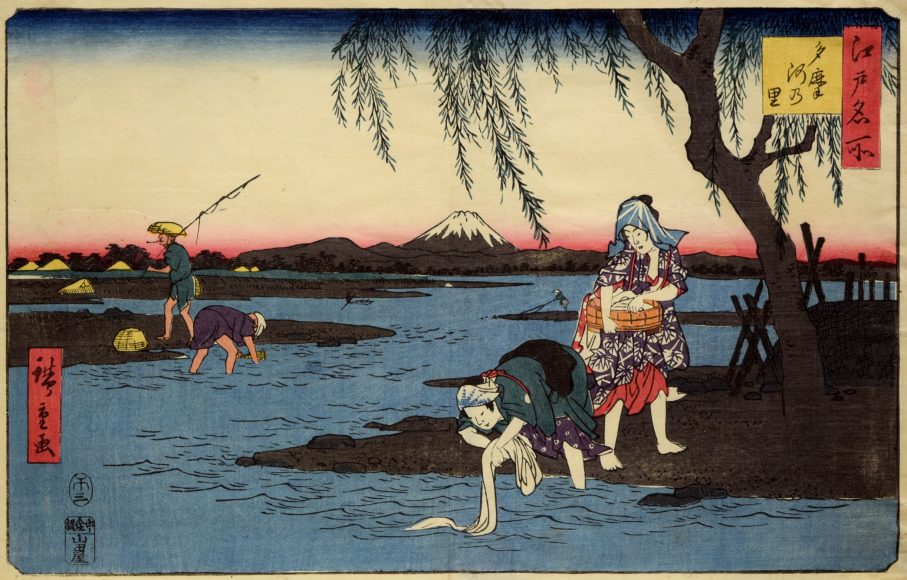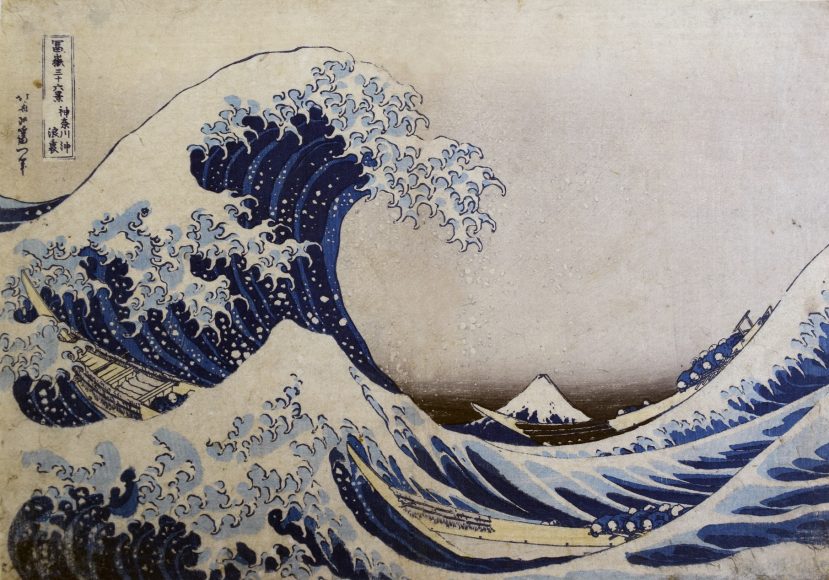The Japanese woodblock prints that were all the rage among the French Impressionists and Postimpressionists when they were exhibited in Paris in 1890 were called ukiyo-e ,or “pictures of the floating world,” as the Japanese intended them to be pleasurable scenes of an everyday life that was at best fleeting. If there was ever a metaphor for our pandemic age, it is the ukiyo-e print, which teems with color and a life that no longer exists even as it is captured in art. No wonder everyone from Mary Cassatt to Vincent van Gogh was enchanted.
The Bruce Museum in Greenwich displays 40 of these from the permanent collection of Pennsylvania’s Reading Museum in “Floating Beauty: Women in the Art of Ukiyo-e” (Tuesday, Sept. 1 through Nov. 1), which considers women in Japan’s Edo period (1615-1858). This was a pivotal time in Japanese history that took its culture and society from the strictures of the military shogunate to an opening up by the West, with momentous consequences for all. As Americans celebrate the centennial of women’s right to vote, the exhibit – for which Bruce members will get a sneak peak on Sunday, Aug. 30 – will also explore how women in all walks of life transcended being beautiful objects (bijinga).
For more, including admissions guidelines in the age of the coronavirus, visit brucemuseum.org.



